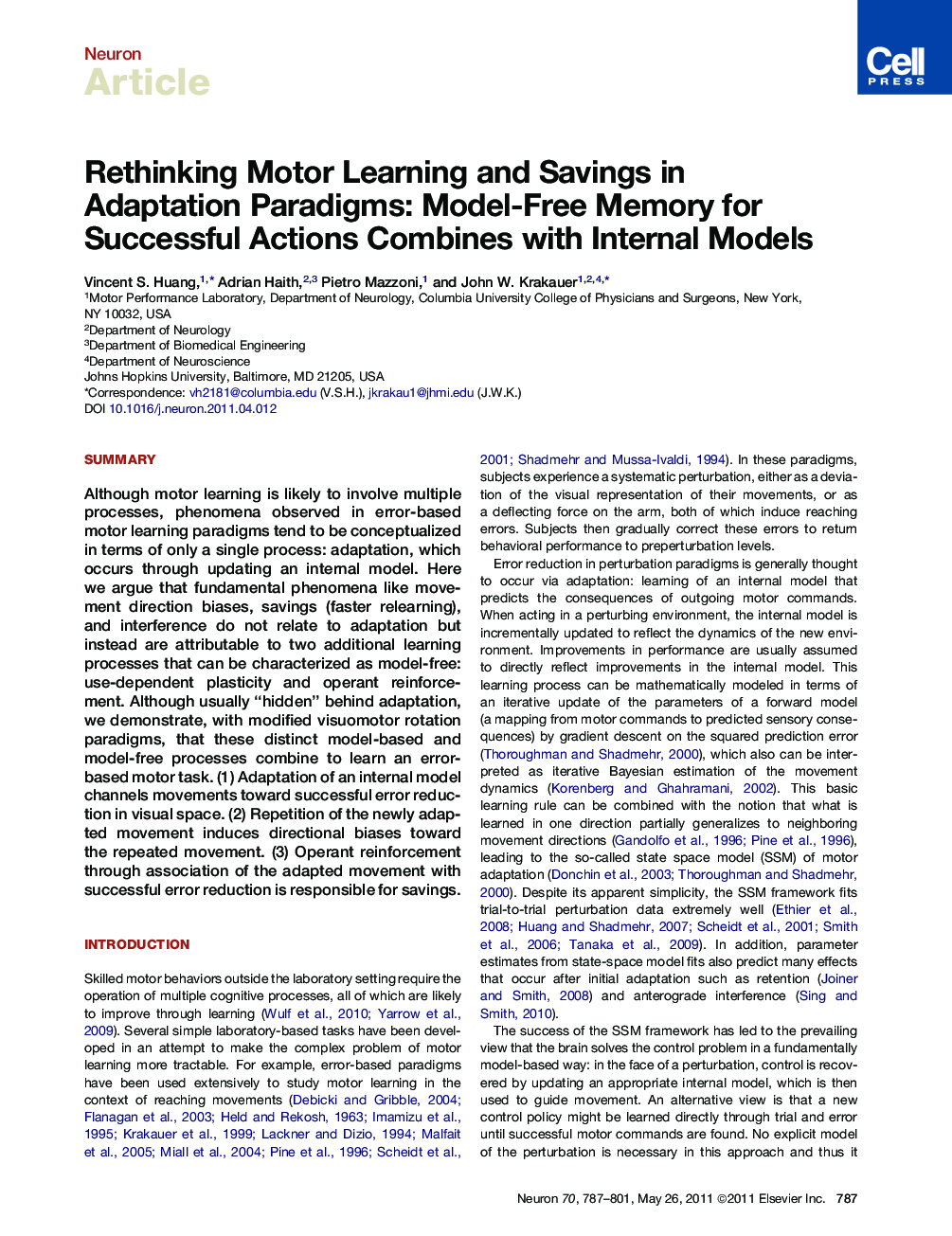| Article ID | Journal | Published Year | Pages | File Type |
|---|---|---|---|---|
| 4321770 | Neuron | 2011 | 15 Pages |
SummaryAlthough motor learning is likely to involve multiple processes, phenomena observed in error-based motor learning paradigms tend to be conceptualized in terms of only a single process: adaptation, which occurs through updating an internal model. Here we argue that fundamental phenomena like movement direction biases, savings (faster relearning), and interference do not relate to adaptation but instead are attributable to two additional learning processes that can be characterized as model-free: use-dependent plasticity and operant reinforcement. Although usually “hidden” behind adaptation, we demonstrate, with modified visuomotor rotation paradigms, that these distinct model-based and model-free processes combine to learn an error-based motor task. (1) Adaptation of an internal model channels movements toward successful error reduction in visual space. (2) Repetition of the newly adapted movement induces directional biases toward the repeated movement. (3) Operant reinforcement through association of the adapted movement with successful error reduction is responsible for savings.
► Internal models are not sufficient to explain results in adaptation paradigms ► Repetition of adapted movements leads to use-dependent movement biases ► Operant association between adapted movements and success enables savings ► Motor tasks are learned by combining model-based and model-free processes
